Which countries are using the most renewable energy?
The countries winning the renewables race – and those lagging behind

From wind to solar, renewable electricity sources are providing power to millions of people worldwide. But while some economies are leading the way in boosting renewables, others are lagging behind.
Using figures from the online collaborative science project Our World In Data we've ranked 27 countries based on how much of their primary energy came from renewable sources in 2023, the latest year for which complete data is available. Read on to discover which nations top the list...
All dollar amounts in US dollars.
Methodology
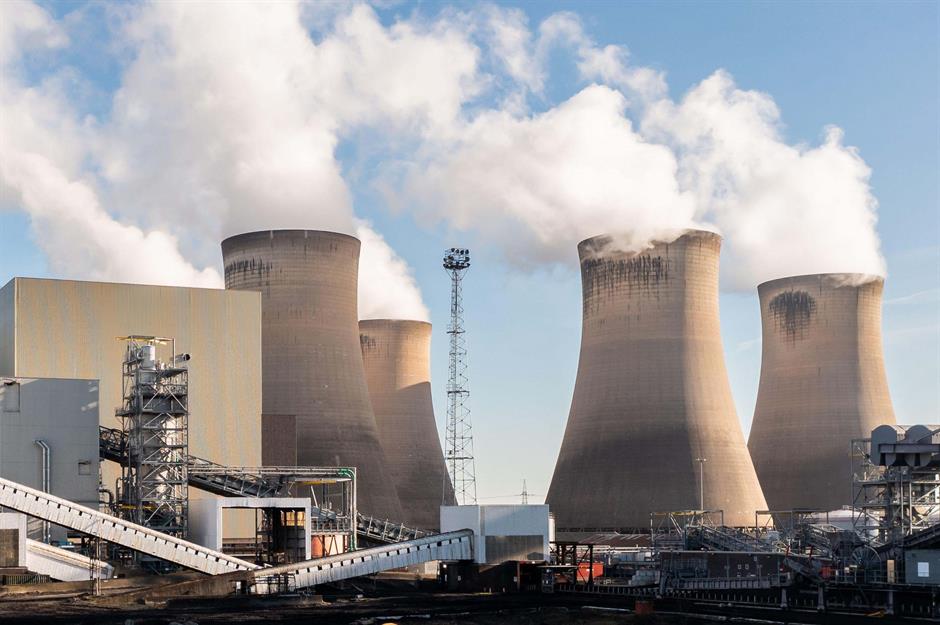
The main metric which Our World In Data uses is called primary energy, which means the amount of energy within a resource before it’s transformed into usable energy. For instance, the energy inherent in coal before it is burned to generate electricity (pictured).
Primary energy therefore includes the final usable energy, such as that electricity, but also the energy lost through inefficiencies when the resource is consumed, such as the heat lost when coal is burned.
Renewables don’t have thermal inefficiencies, so to compensate for this, Our World In Data uses a technique called the substitution method. This multiplies their output to attempt a like-for-like comparison with the primary energy of fossil fuels.
With all this in mind, how do the various countries compare?
South Africa: 3.94% renewables

South Africa is certainly not a world leader when it comes to renewables, with sources such as wind, solar and hydropower comprising just 3.94% of its primary power in 2023 – barely more than the previous year’s 3.81%.
Solar energy is a particularly as-yet-untapped market for the nation, with most regions basking in more than 2,500 hours of sunlight each year. Despite this, solar accounted for just 1.23% of the nation's primary energy in 2023.
However, the situation is slowly improving. The amount of electricity generated by solar panels more than doubled in the previous two years, up to a total of almost 16 terawatt-hours (TWh). What's more, Defy Appliances, the country's largest domestic appliance producer, has now begun producing a range of solar-powered fridges and freezers, which can function entirely off-grid, and use the sun’s rays to keep things cold.
Malaysia 7.89% renewables
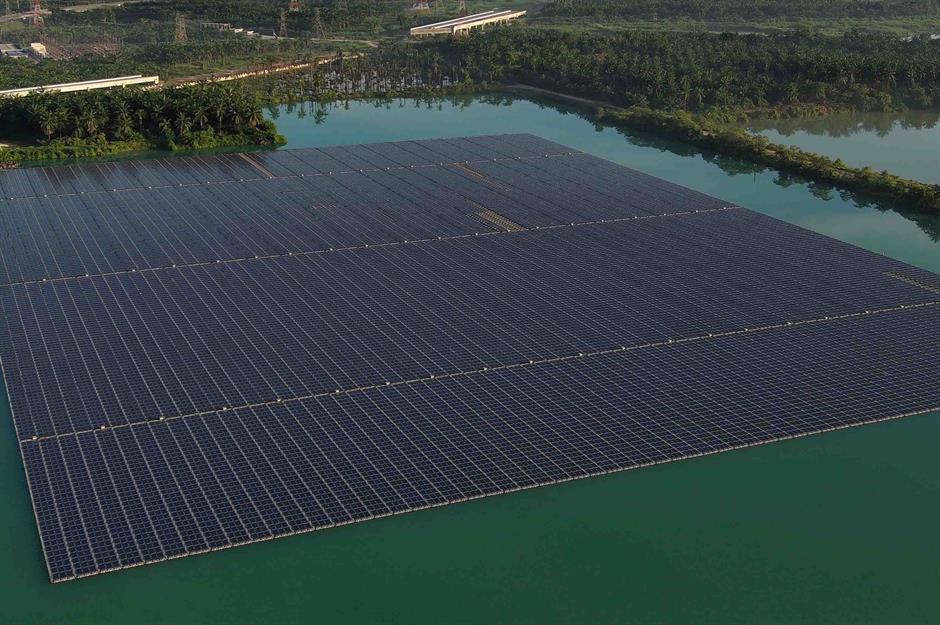
Malaysia is another single-digit performer; again, its 7.89% renewables share is only fractionally more than the figure for 2022. However, it has bold plans to significantly increase its renewables by 2035, and the government in Putrajaya has announced that it will not approve any new coal-fired power stations.
The country uses solar, biopower and small hydroelectricity generation as its main renewable sources. Wind farms do not feature prominently because of unfavourable wind speeds at certain times of the year, and there is only one small onshore plant so far, though several more small-scale projects are possible.
New solar farms are emerging, including some that float on the surfaces of lakes (pictured), which have the additional benefit of reducing water evaporation. One particularly innovative venture will see floating solar combined with hydroelectric generation and be capable of supplying power both day and night.
Mexico: 8.61% renewables

Like Malaysia, Mexico is an oil producer, so it’s perhaps no surprise that its renewables only accounted for 8.61% of primary energy. In fact, that represents a reduction on the 2022 figure of 9.69%.
Critics say Mexico has failed to incentivise private investment in renewable energies. They point to the economic significance of crude oil exports and claim the government has traditionally championed the state-owned oil company PEMEX, fearing instability if it's allowed to stagnate. They also accuse it of giving the state electricity provider priority access to the national grid, leaving no room for private renewables providers.
Things could be changing though. Mexico now has its first female president, Claudia Sheinbaum (pictured), a former climate scientist who has distanced herself from the reliance on fossil fuels promoted by her predecessor, Andrés Manuel López Obrador. Upon taking office in October, she made a public commitment to limit oil production and boost green energy. With abundant wind, solar, hydro and even geothermal resources to exploit, Mexico might soon be moving up the renewables rankings.
India: 9.68% renewables
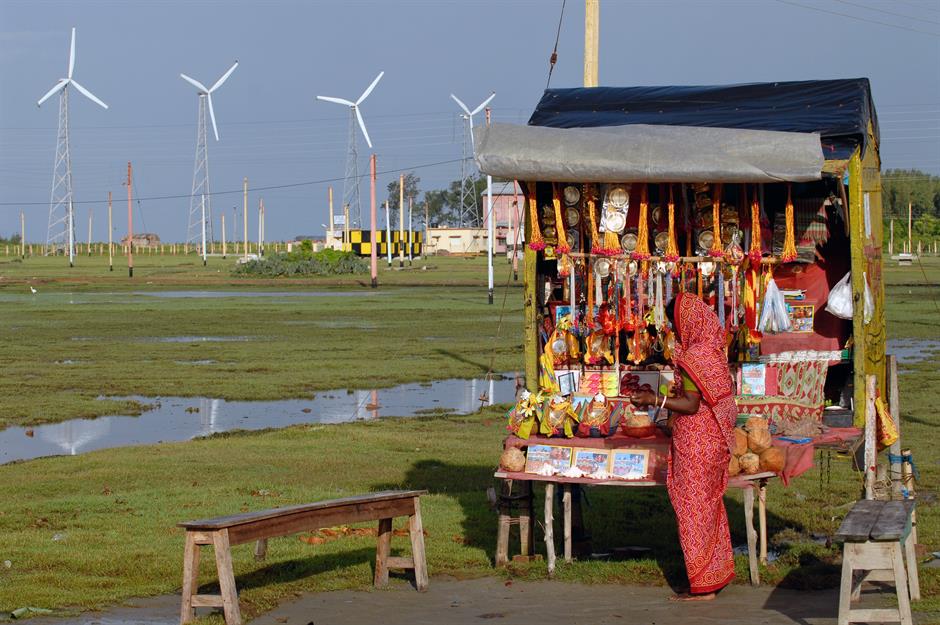
Next on our list is India, which generated 9.68% of its primary energy from renewables in 2023. This included 3.6% from hydropower, 2.72% from solar and 1.97% from wind, according to Our World In Data.
The country is keen to tackle its low percentages of solar and wind energy, and it has pledged to hit net zero carbon emissions by 2070. In April 2023, its Ministry of New & Renewable Energy (MNRE) announced it would issue renewable project bids worth a total of 50 gigawatts (GW) annually during the financial years 2024-2028. Wind power will account for at least 10GW of this each year.
However, a rapidly growing economy and rising population are creating an ever-increasing demand for electricity, making the transition more challenging. Notwithstanding its expansion of renewable electricity, India remains heavily dependent on fossil fuels. It continues to commission new coal-fired power stations and plans to quadruple its natural gas consumption by 2030.
USA: 11.66% renewables

The US Energy Information Administration (EIA) has predicted that renewable sources will generate 44% of America's electricity by 2050 – mainly from wind and solar power. The nation has a long way to go to get there, with renewable sources accounting for just 11.66% of America's primary energy in 2023 – barely any more than the previous year.
As the world’s largest oil producer, the USA is struggling to break up with fossil fuels entirely, despite its best efforts to go green. The state of Texas, for example, is America's largest producer of both oil and renewable energy. Meanwhile, the Biden administration introduced the so-called Inflation Reduction Act (IRA) and the complementary Bipartisan Infrastructure Law (BIL), which are funnelling billions of dollars into developing clean energy, mostly by offering grants, tax credits and loan guarantees.
The tide could turn once Donald Trump takes office in January. Some of Trump's supporters have advocated repealing the IRA and BIL, citing their enormous cost and America’s even greater national debt. They say renewables need to pay for themselves rather than depend upon taxpayer cash.
Philippines: 11.99% renewables
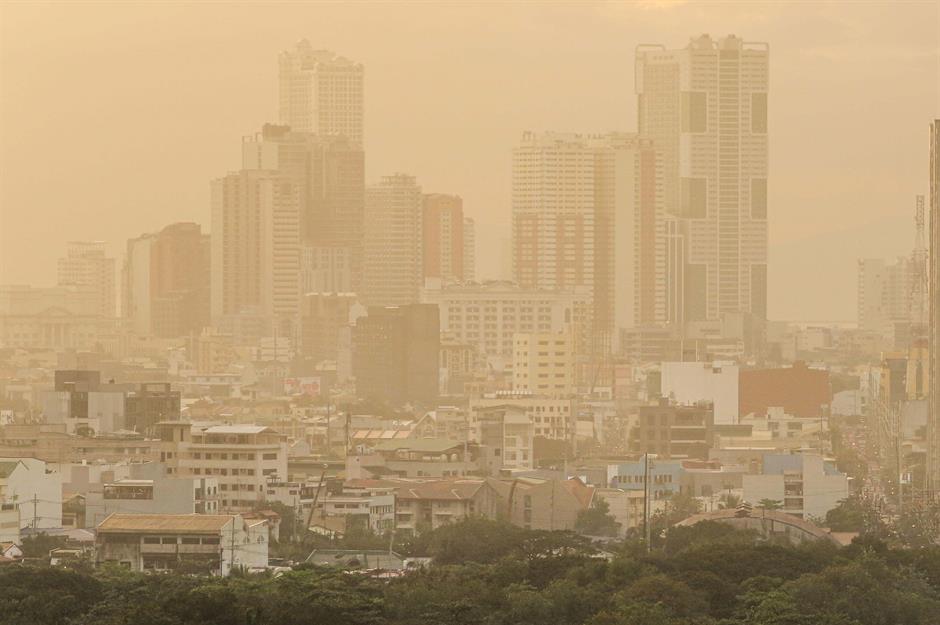
Down from a high of almost 19% in 2006, the Philippines makes an uninspiring 11.99% in the latest figures from Our World In Data. Hydropower accounts for over a third of this. In a densely populated country, land tends to be scarce and therefore onshore wind and solar have taken a back seat in the energy mix.
On the other hand, as an archipelago the Philippines has a massive amount of coastline – some 17,000 kilometres of it – so it's very well placed to develop offshore wind power. The potential could be in the region of 178 gigawatts, but the problem is cost. To make its transition to cleaner energy, the country needs around $300 billion (£230bn), according to OECD estimates, so it will clearly entail private financing. To unlock this, the government has removed restrictions on foreign direct investment in the energy sector. For now, though, the Philippines remains heavily dependent on fossil fuels.
Japan: 12.58% renewables

In 2022 imports of hydrocarbons accounted for no less than 90% of Japan’s total energy supply. Moving to a more renewables-based energy supply is difficult, however. There’s limited land available for onshore wind or large solar farms because of its often-mountainous terrain and the competing demands of agriculture. Meanwhile, a steep coastal shelf makes developing offshore wind more of a challenge. The country’s energy mix suffered huge disruption after the 2011 Fukushima disaster led to the closure of all 54 nuclear reactors (some have since reopened.) For the most part, coal made up for their absence.
A further obstacle is the way Japan’s electricity grid is structured, with different regional networks rather than one national one. This means transporting renewables from where they can be generated to big population centres can be costly and bureaucratic.
The government is proceeding cautiously toward decarbonisation. A feed-in tariff has seen solar generation increase steeply in the last 10 years but it was still only 5% of Primary Energy in 2023, according to Our World In Data. Wind made up just half a percent. Until the pace picks up, Japan will continue to depend on those oil, coal and gas imports.
Argentina: 14.1% renewables
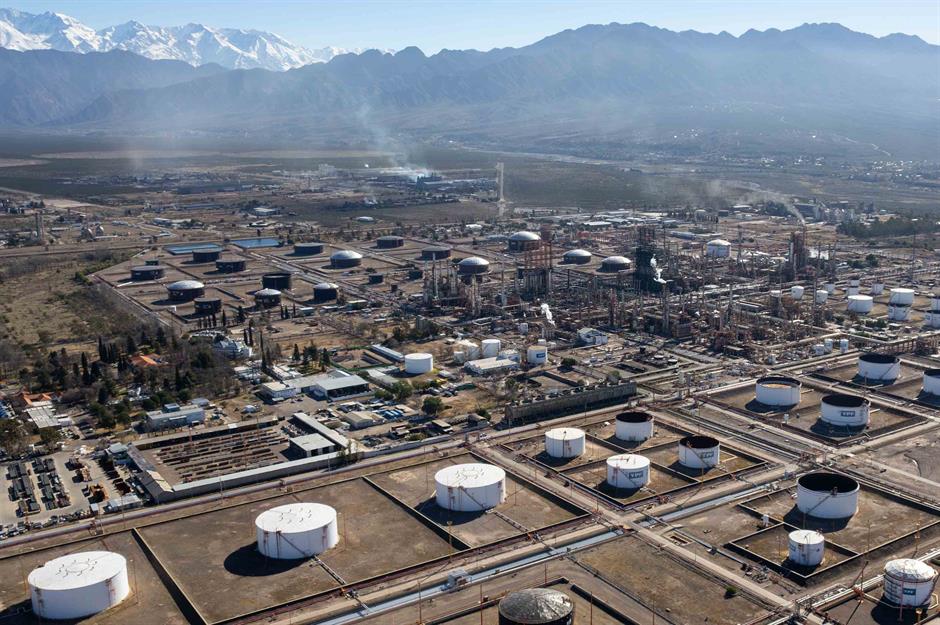
In economically troubled Argentina, renewables account for 14.1% of primary energy. There’s plenty of renewable potential, but investors can be hard to find, given the country’s record of debt defaults and chaotic finances. Desperate for foreign exchange, the administration of libertarian president Javier Milei is expanding operations at the vast Vaca Muerta shale gas and oil field. That said, it’s also hoping to grow the renewable sector.
Congress has approved one of Milei’s flagship bills that aims to make the climate for large-scale investment more predictable, including in the energy sector. Much will depend on the success or otherwise of his various 'shock therapy' policies which are intended to deregulate and stabilise the economy.
In the past, Milei has argued that global warming is a hoax, and there were fears he would take Argentina out of the Paris climate accord. However, since taking office, he has reaffirmed his commitment to that agreement and retained a 2050 carbon net zero target.
Australia: 14.98% renewables
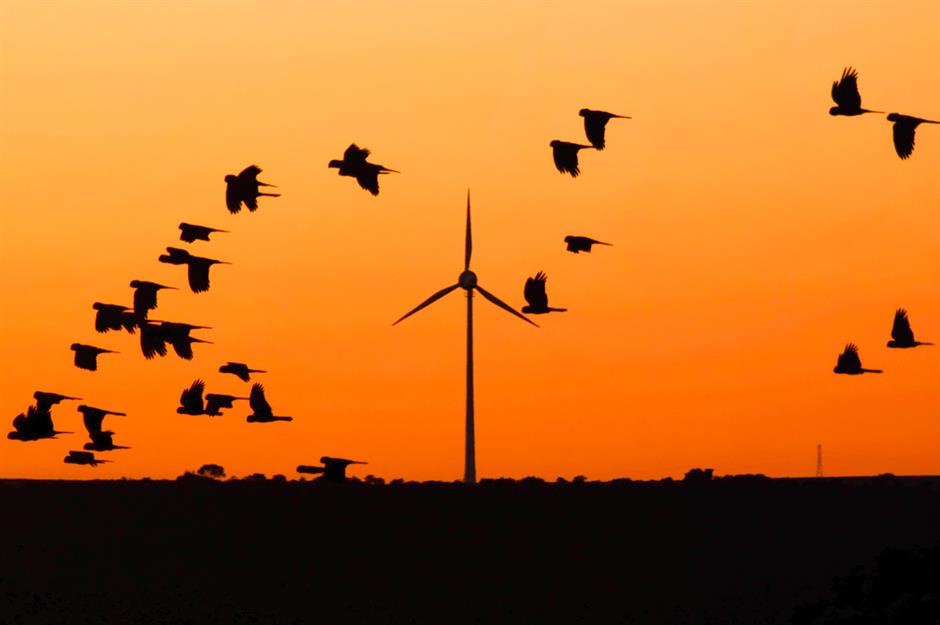
Unlike its southern hemisphere peer New Zealand, Australia isn't leading the way when it comes to renewables, which made up just 14.98% of its primary energy share in 2023.
According to a report by one of its environmental advocacy groups, the Clean Energy Council, investments in renewable plants have suffered an "alarming" slowdown. Approvals for new solar farms are down by over a third, and there is no new backing for windfarms. Meanwhile, generation by coal plants went up in the first part of 2024.
It’s not all bad though. The Council noted that while large projects are progressing poorly, smaller rooftop solar panels are growing in popularity, and battery technology large and small is "storming ahead". The Council also claims that failing to invest in renewables would leave Australia "at the back of the queue for the technology and skills [it needs]."
France: 16.94% renewables

France lags behind its European neighbours on green energy. Its electricity supply depends heavily on nuclear generation which, while carbon-neutral, is nevertheless controversial and not renewable. In 2023, the country achieved 16.74% of its primary energy from sustainable sources. Although it's expected to pick up the pace by 2030, this probably won’t be enough to meet EU targets, according to the French Renewable Energy Observatory.
France has failed to meet targets before. For example, it was supposed to generate 23% of its total energy requirements from renewable sources by 2020 but didn't manage to do so. Paris argues decarbonising electricity is more important than growing renewables and that its nuclear fleet is contributing to that goal.
UK: 20.52% renewables

Our World In Data records UK renewables as 20.52% of primary energy in 2023. Since then, there’s been a change of government, with the new Labour administration vowing to make the country a "clean energy superpower". The plan is to double onshore wind capacity, massively expand solar power and establish a state-backed entity called Great British Energy, which will oversee the transition to a carbon-free electricity grid in just six years. Meanwhile, the country’s last coal-fired power station has closed for good.
Environmentalists have welcomed the UK’s radical ambition, but the government has set itself an enormous challenge. Britain’s planning system is notoriously slow and the required turbines, solar farms and overhead pylons are sure to face strong local opposition. Critics fear the move to entirely renewable energy will bring about power cuts. There are even questions over whether the country has the technical skills in the numbers needed for such a rapid transition.
Meanwhile, British billpayers already face some of the highest energy prices in the developed world. The Energy Minister Ed Miliband (pictured) insists that green energy will end up costing less in the long run.
Ireland: 22.3% renewables
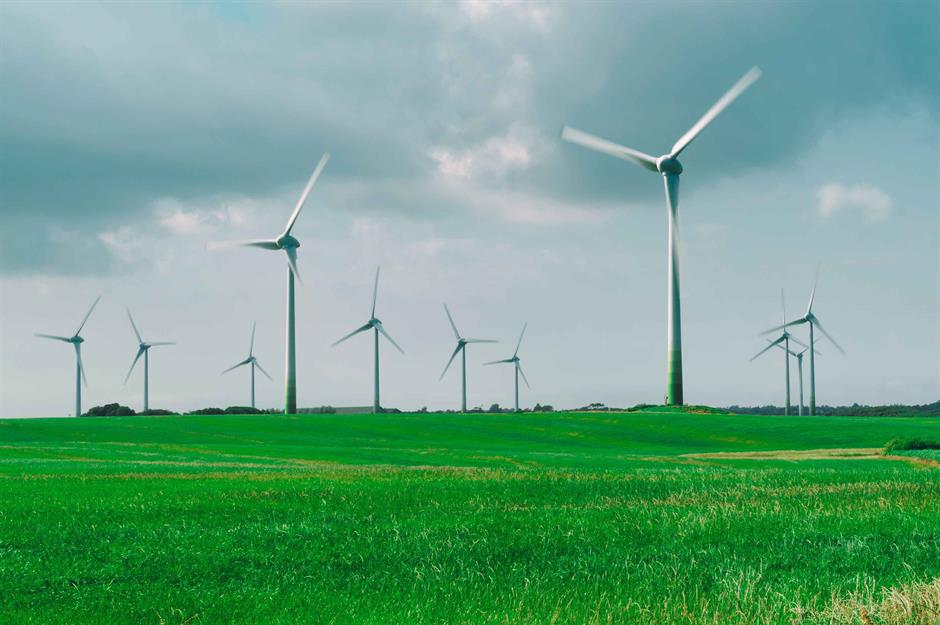
The Republic of Ireland’s plan for a renewables-based future is also ambitious, calling for 80% of its electricity (and that of Northern Ireland) to be sustainably generated by 2030. And according to Our World In Data, the Republic managed almost 44% in 2023, while its renewable share of all primary energy was 22.3%.
Ireland is making strong progress toward its goals, but it has faced significant challenges, including planning delays and a shortage of grid connections. These have slowed the growth of new plants, such as onshore wind farms, and could cause it to miss its 2030 target. In the long term, though, it should be able to grow its renewables, especially offshore wind.
In this area, Ireland’s potential is as great as its ambition: Its maritime area is ten times the size of its landmass, meaning it can harness the enormous force of Atlantic gusts that hit its highly exposed west coast.
Germany: 24.39% renewables
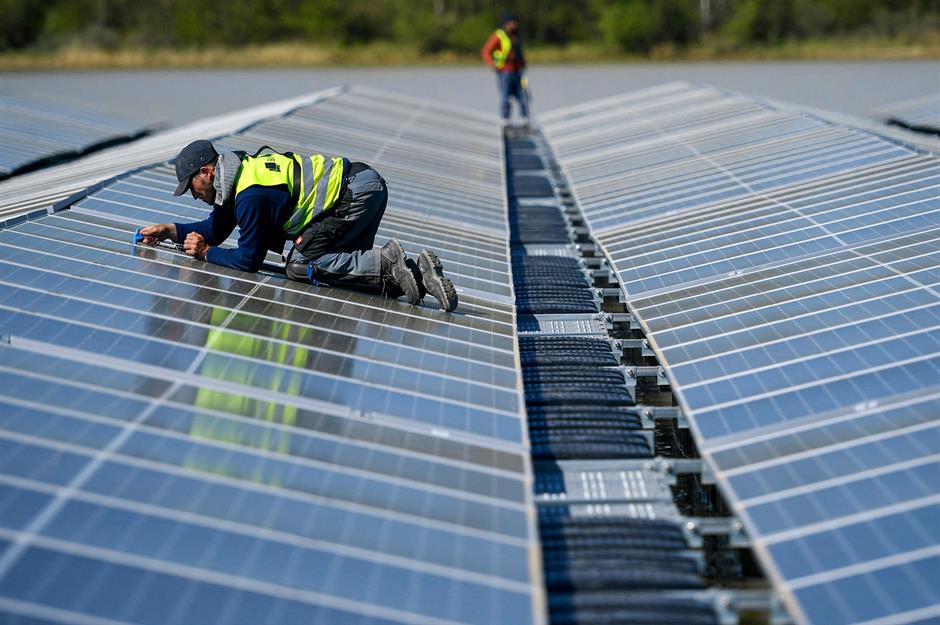
The German government has plans to generate 100% of its electricity from sustainable sources by 2035. Our World In Data says that in 2023, the figure was just over half of that, with renewables also accounting for almost a quarter of Germany's primary energy.
In the wake of Russia's war in Ukraine, the country has largely shaken off its reliance on Russian gas. But while some nations are embracing nuclear power as a fossil fuel alternative, Germany shut the doors of its remaining nuclear power plants last spring. So how does Europe's largest economy plan to generate its electricity?
Wind and solar are expanding markets in Germany but to achieve its targets, current wind energy capacity will need to double, while its solar energy capacity will need to more than treble. Early in 2024, Economy Minister Robert Habeck declared that at the current pace of expansion, the target would be met. Germany is about to “enter the home stretch”, the Green Party politician predicted.
Obstacles do remain though. There’s been infighting over energy policy within the three-party coalition government and criticism over high energy prices. The far-Right AfD party made opposition to new renewables projects a centrepiece of its campaign in state elections earlier this year, and with federal elections due no later than September 2025, the scope for new policy initiatives in the coming months could be limited.
Spain: 24.92% renewables
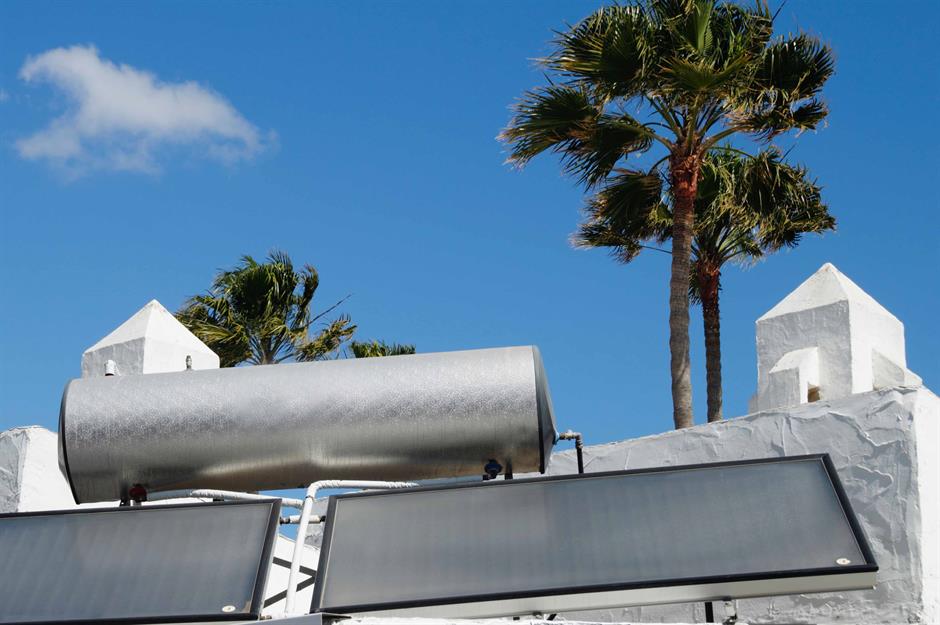
At 24.92% of primary energy coming from renewables, Spain is closest to the average among our chosen sample of countries. Surprisingly perhaps for such a famously sunny country, it’s wind power that forms the bigger part of this figure, at 10.61%. Solar comes in at only 7.74%.
Even so, solar has enjoyed the most impressive growth in the last decade or two, increasing by a factor of eight since 2008 as opposed to wind power’s mere doubling in the same timeframe. This means Spain now has the biggest renewable infrastructure of any EU country apart from Germany. The rise of its solar generation has much to do with the COVID-19 pandemic; apparently, many people saved money and invested it in rooftop photovoltaic panels.
In fact, Spain’s solar revolution can sometimes provide too much power. Domestic solar panels have led to a reduction in demand from the national grid and, at times, there can now be more supply than the country needs. This drives prices down, sometimes even into negative territory. Whilst this is great for consumers, it’s potentially a problem for commercial generators and can inhibit investment in the sector. To counteract this, Spain is aiming to electrify even more and, in doing so, grow demand.
Peru: 26.35% renewables
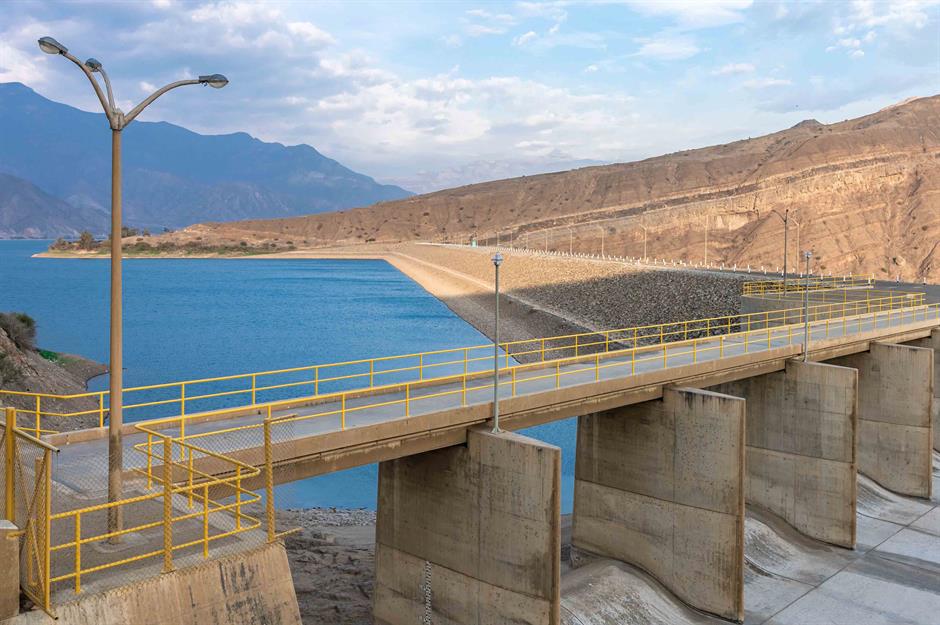
With abundant sunshine and wind and a varied geography, Peru is well suited to exploit renewables, which accounted for 26.35% of primary energy last year. Hydropower is the main type of sustainable energy, accounting for about four fifths of this figure. Over half of Peru’s electricity production came from this single resource. However, biomass and geothermal energy also feature in its energy mix.
Hydropower is not without its challenges. Across several South American countries including Peru, a drought which began in 2023 has reduced water levels and threatened the sector’s electricity output. Ironically, the drought is ascribed to global warming, as well as the El Niño weather phenomenon. Peru also has the highest number of dams planned or constructed across tributaries to the Amazon, which some say threaten the region’s wider environment.
Peru aims to diversify renewable generation and achieve greater energy security by significantly increasing its wind and solar resources in the coming years, with the goal of generating 20% of its primary energy from these sources by 2030.
Colombia: 28.92% renewables
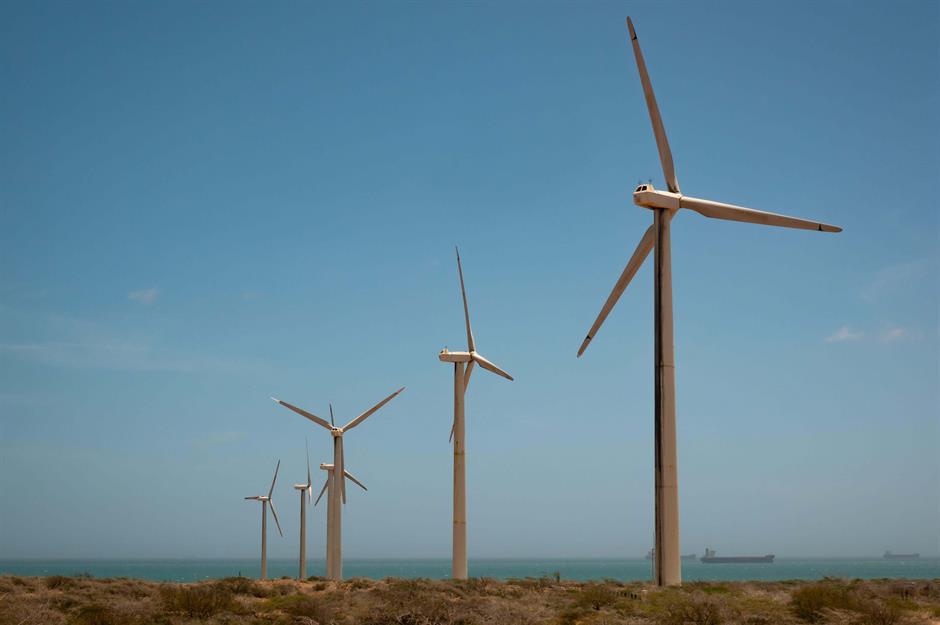
A leader in South America – and the world, for that matter – when it comes to consuming smaller amounts of fossil fuels, Colombia has ample potential for renewable energy, which made up almost 29% of primary energy in 2023. However, this was a lower figure than the almost 31% it clocked up in 2022.
Of Columbia’s renewable sources, by far the largest is hydropower, thanks to the numerous dam projects already established across the country. Many more are planned. However, there are concerns the country is too reliant on one source of energy, leaving it vulnerable. This is especially pertinent when factoring in potential climate change side effects, such as drought, which can reduce the capacity for energy generation.
As part of its efforts to diversify, the country celebrated the launch of its first wind farm in nearly two decades in 2022, with several others tipped for construction by 2025.
Ecuador: 28.98% renewables
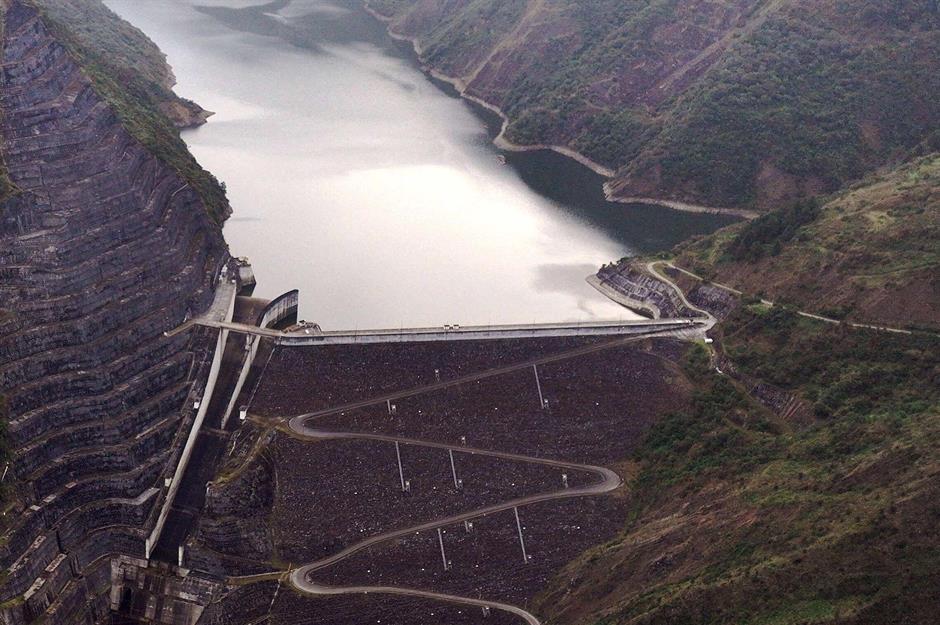
Once highly dependent on fossil fuels, Ecuador's government has bet big on hydropower over the last decade or so, building eight new facilities. Yet despite its comparatively impressive use of renewables, which accounted for 28.98% of its primary energy in 2023, it’s had setbacks. The regional drought hit hydropower output and led to power cuts. Hoping to overcome this, the government is pushing a bill through the National Assembly that will promote more investment in the energy sector and allow power distributors to access privately generated electricity.
Meanwhile, Ecuador has halted plans to double its oil production by 2028. In 2021, several major EU banks agreed to stop financing its oil trade to help protect the Amazon's rainforests. This decision followed protests from indigenous communities across the country, who wanted a moratorium on expanding fossil fuel extraction activities on their territories.
In August last year, voters approved a total ban on oil drilling in a 2.5-million-acre stretch of land in the Yasuní National Park in the Amazon, a region that had previously produced almost 60,000 barrels a day.
Canada: 29.26% renewables

Significantly outpacing its North American neighbour, Canada generated 29.26% of its primary energy through renewable processes in 2023. Most of this came from hydropower, with all but two of the country's provinces boasting at least one hydroelectric power station. In fact, government statistics suggest that more than 60% of Canadian households and businesses are now fuelled by hydropower.
Other renewables are trailing behind, although that could soon change. Partly in order to address the challenge of the United States’ enormous green subsidy programme, the government has pledged C$20 billion ($14.4bn/£11.1bn) to the Canada Infrastructure Bank for major clean electricity infrastructure projects. According to S&P Global Commodity Insights, Canada rose six points in its ranking of the world's top destinations for clean energy investment last year, reaching 14th place.
But the road to 100% renewables is unlikely to be smooth. One of Canada's most significant stumbling blocks is expected to be push-back from the oil-rich province of Alberta, where much of Canada’s wind capacity is sited. Alberta has sought to block renewables projects on prime farmland and limit new wind turbines on what it calls "pristine landscapes".
Chile: 30.53% renewables

Topping the 30% mark is Chile. Two fifths of that figure is made up by hydropower, with solar accounting for a further third. However, wind power is growing strongly, increasing more than fivefold in the past decade.
Chile aims to make its electricity supply completely independent from fossil fuels by 2040. It's blazing a trail with some remarkable technology. In the Atacama Desert, it’s built Latin America’s only solar thermal tower, the Cerro Dominador. This comprises a 240-metre-high structure surrounded by thousands of mirrors which reflect and concentrate sunlight onto a receiver, heating so-called solar salts extracted from the desert floor to 565 degrees Celsius. The salts melt, which allows them to store electricity for up to 17 hours, turning the tower into a gigantic battery. The Cerro Dominador also superheats water to drive a turbine, generating some 110 megawatts of electricity.
As one of South America’s fastest growing economies, energy demand is rising steeply in Chile. Yet with its sun-baked deserts, windswept coastlines and huge waterfalls, it has massive renewables potential. Even better – it seems to have the political willpower to put them to good use.
Finland: 35.94% renewables
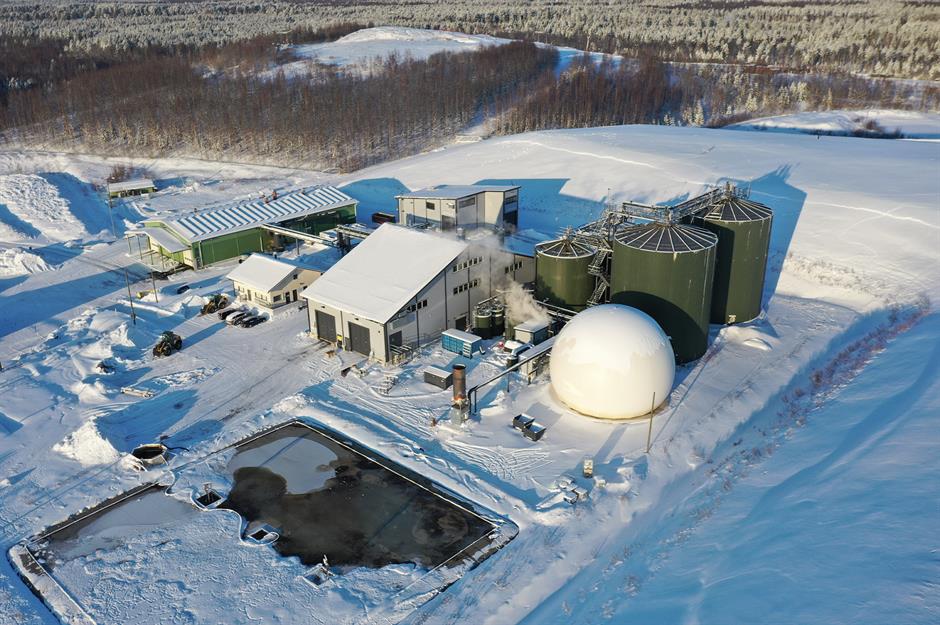
Obtaining more than one-third of its primary energy from renewable sources, Finland is yet another nation leading the way by reducing its reliance on fossil fuels.
With its vast forests, the Nordic nation is working particularly hard to establish itself as a leader in bioenergy (also referred to as 'biogas'), an energy source that's essentially formed using waste from the forestry industry. It can also be generated by agriculture and industrial production.
Biogas, biomass, and wood-fuels in general are usually considered to be carbon neutral because the plants involved will have absorbed carbon dioxide during their lifecycle. In recent times, Finland has seen significant investments in biogas, which can be used as a replacement for natural gas, while Nordic firm Ren-Gas is developing a series of power-to-gas projects across the nation.
Portugal: 36.04% renewables
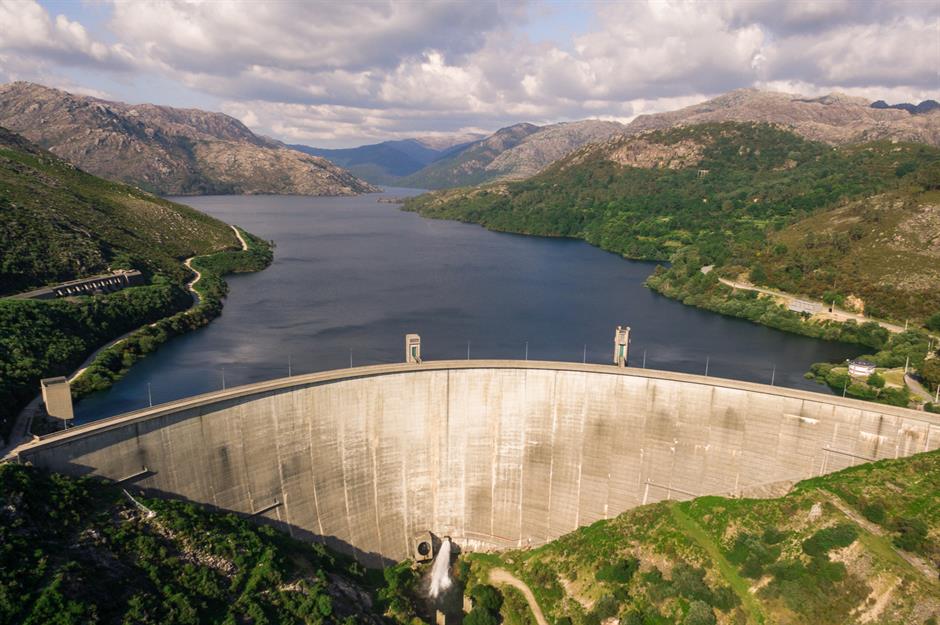
Of the total primary energy it consumed in 2023, Portugal sourced over 36% from renewables – a significant year-on-year increase from the 29.57% it achieved in 2022. In the first quarter of 2023, over 72% of the nation's electricity was generated by renewable sources, and on six consecutive days last autumn it even made more renewable energy than it needed.
With hydroelectric dams and wind turbines generating much of this supply (at 11.9% and 12.97% of primary power respectively), the European country has already invested significantly in clean energy and self-sufficiency. The Portuguese government is keen to ramp this up as much as possible, with the war in Ukraine wreaking havoc on energy markets.
Portugal shut down its last two coal mines at the end of 2021, officially signalling its desire to move away from fossil fuels. This made it the fourth European nation to turn its back on coal.
Switzerland: 38.33% renewables
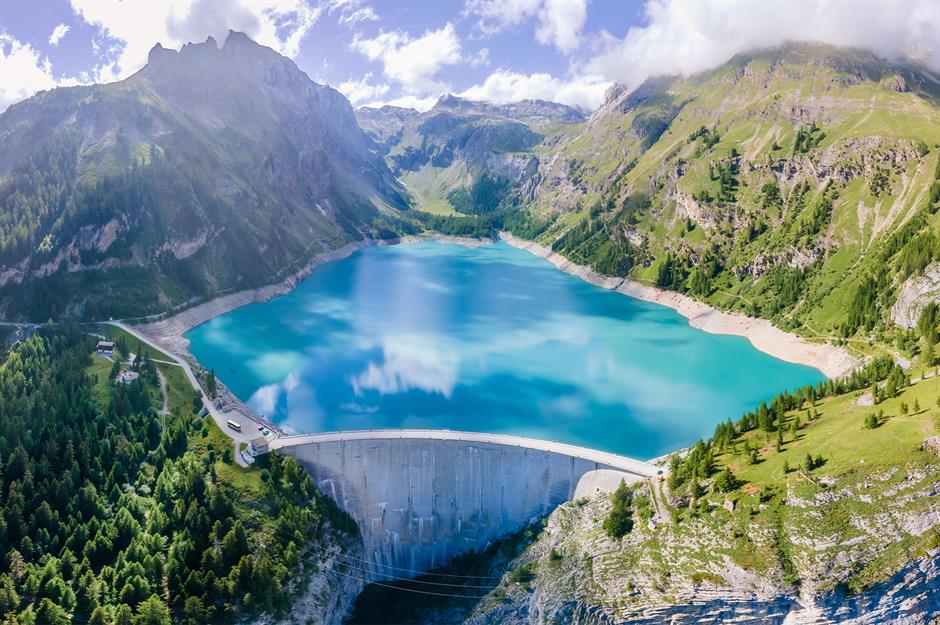
In such a mountainous country as Switzerland, hydropower accounts for the lion’s share of sustainable energy. When all the other renewable sources are added in, the total accounted for 38.33% of primary energy in 2023 – a big leap from 33% in 2022.
That year, the country had suffered diminished levels of hydropower due to low water levels during the hot, dry summer. Partly to safeguard against this kind of drop in output, the Swiss government is aiming to boost other renewable energy sources such as solar power. The Swiss Federal Council has said that solar farms in elevated Alpine areas are set to "play a particularly key role in the future".
Another initiative is to gradually phase out Switzerland's reliance on nuclear power, as confirmed in a referendum in 2017. Two new reactors had been planned, but these will no longer go ahead and the last unit is likely to go offline around 2034.
Austria: 40.08% renewables
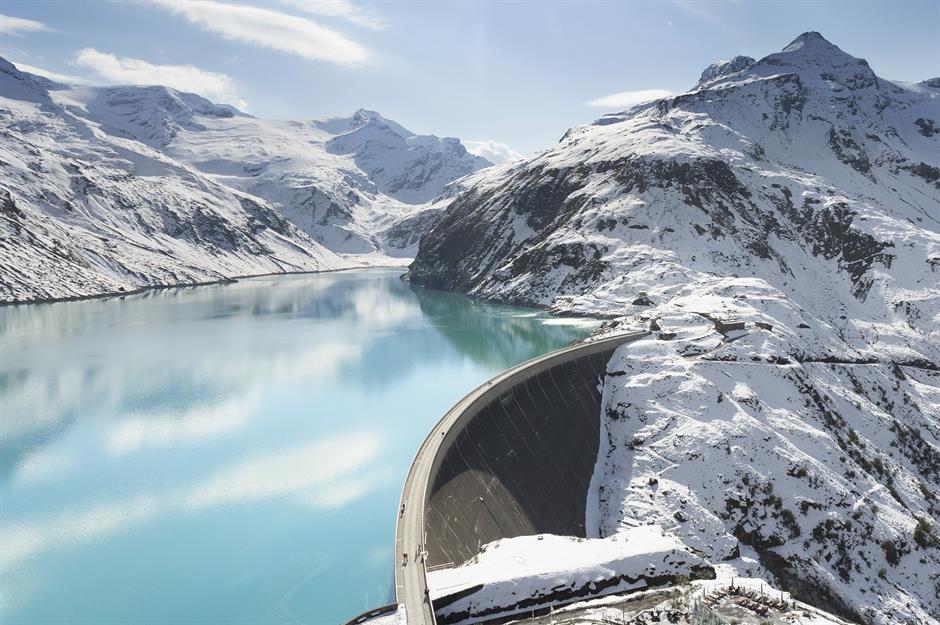
One of the top consumers of renewable energy in Europe, Austria aims to generate 100% of its electricity from renewables by 2030. To meet this goal, the nation is planning numerous hydroelectric, wind and solar projects.
With its bountiful mountains and rivers, the country has been backing hydroelectric resources since the 19th century – the year 1884, to be precise. Following the First World War, Austria began to invest heavily in hydro to cope with coal shortages, with the International Hydropower Association noting that the sector "experienced another revitalisation following the injection of funds from the European Recovery Program in the 1950s".
Industry experts suggest there's still capacity for the Alpine nation to develop more hydropower to meet increased electricity demand. However, as this energy source is vulnerable to climate change, Austria is also expanding its wind energy output.
New Zealand: 42.27% renewables
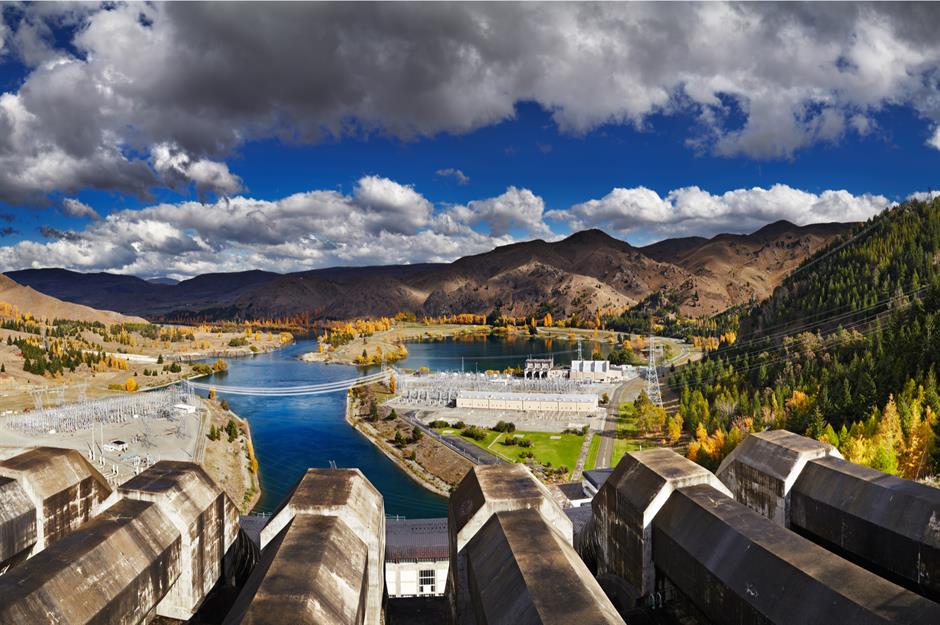
Top in its region when it comes to using renewables, New Zealand is working toward an ambitious goal of phasing out fossil fuels by 2035.
Like many countries on our list, hydroelectricity is a significant source of New Zealand's energy. However, providing a reliable supply means storing water, and the country has limited capacity for doing so, meaning hydroelectric power can be inconsistent.
To address this, New Zealand is investigating the possibility of a multibillion-dollar pumped hydroelectric storage solution. Nicknamed the 'NZ Battery Project', it's hoped the results of the research will enable the country to generate electricity during dry spells.
Brazil: 50.33% renewables
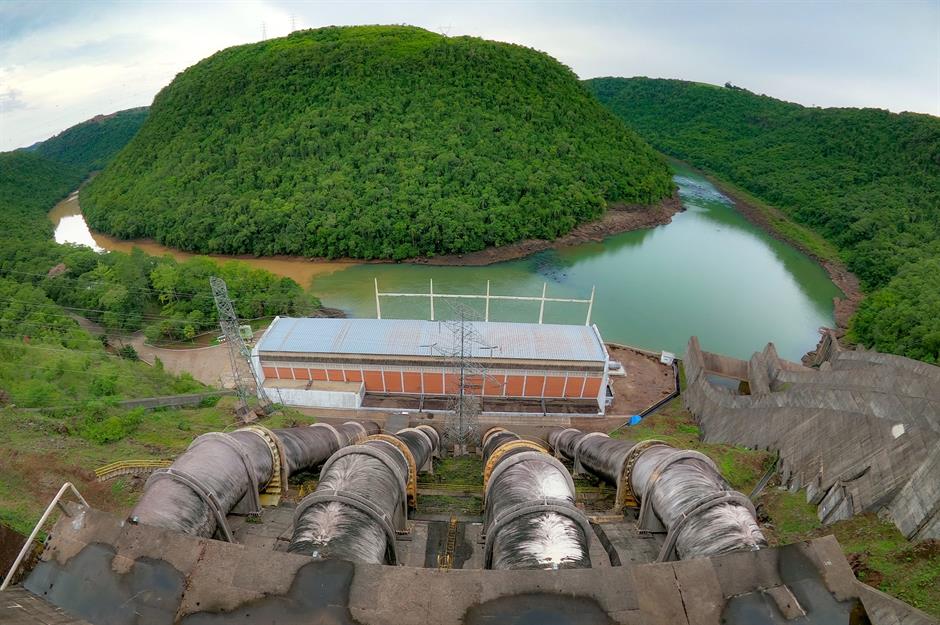
Our World In Data says that over half of Brazil’s Primary Energy in 2023 came from renewables, meaning it had one of the highest rates on the planet. Like many of the other countries in the top 10, Brazil is a heavy hitter when it comes to hydropower. According to the World Economic Forum, it's the world's second-biggest producer of hydroelectricity behind China. However, this year’s drought forced it to shut down two of its largest hydro plants until water levels improve.
Luckily, Brazil also boasts a huge stretch of Atlantic coastline that can be used for wind power, as well as areas of arid landscape that can accommodate solar installations. Massive investment is underway to develop these renewable energy options, with money also being pumped into the country's already established hydro sector.
As the world's largest sugar producer, there's also plenty of scope for Brazil to make ethanol. However, the local plants lack the financial resources to process more sugarcane, cooling investors' interest.
Sweden: 53.89% renewables
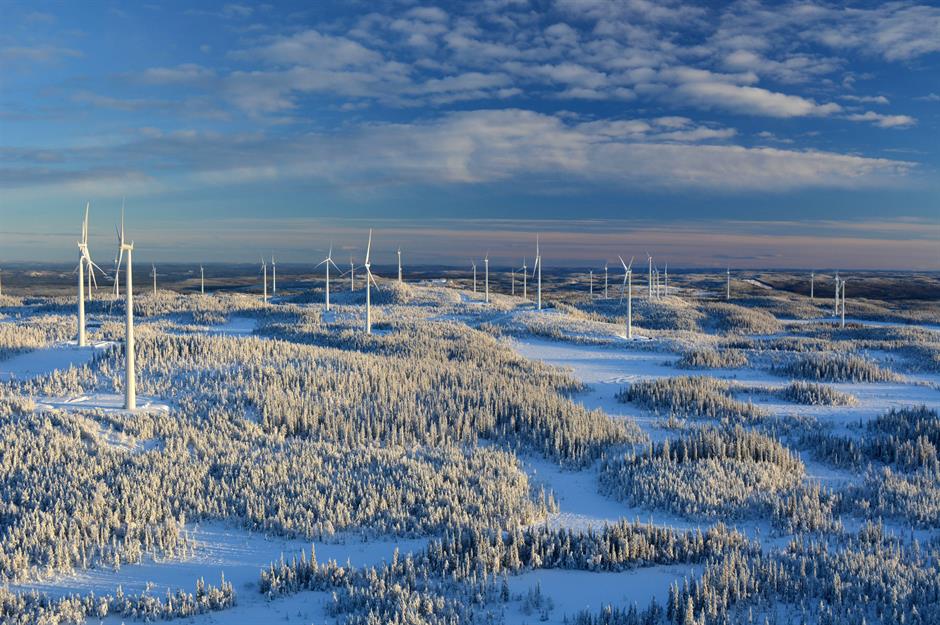
Another country that consumes more renewables than it does fossil fuels, Sweden is a green energy leader both in Europe and around the world. In 2012, it reached its 50% renewable energy target eight years ahead of schedule, thanks to policies that incentivised green energy. These included requiring electricity companies to buy a certain amount and giving power producers a certification for generating it.
But the nation isn't stopping there, with Sweden increasingly banking on biogas to reduce its consumption of fossil fuels even further. The Lidingö-based Swedish Biofuels, for example, has developed a technology it calls 'Alcohol to Jet' (ATJ) to make sustainable aviation fuel (SAF). The ATJ process uses biomass, residual gases and hydrogen to create the fuel – and as a bonus, the production creates excess heat that can be routed to Stockholm's combined heat and power plant.
Three ATJ production facilities are in the works, with the first set to open near the Swedish capital's Arlanda Airport. The debut SAF shipment is expected to be delivered in 2025, with engineers anticipating the substance could replace as much as 40% of the aviation fuel required for Arlanda.
Norway: 72.09% renewables

With no less than 72.09% of its primary energy generated by renewables in 2023, Norway is a true leader in reducing reliance on fossil fuels – at home, at least. The Scandinavian country has substantial oil and gas resources but only uses a tiny fraction domestically. The vast quantities of oil and gas it sends to the UK and Europe comprise around half of its total exports.
In 2022, however, the government unveiled plans for expanding wind power capacity in the North Sea, working in collaboration with several energy companies. It hopes to export much of this electricity instead. Norway also has ambitious goals for developing hydrogen fuels as part of its carbon-reduction efforts (in 2018, the government announced a ban on carbon-emitting cruise ships and ferries from entering its UNESCO-protected fjords, starting in 2026).
This inspired a group of industrial investors to partner on hydrogen factories specifically to fuel ships, and the company has quickly attracted investment while growing to include projects further afield in the Nordic region. Watch this space...
Now discover the average cost of electricity for households around the world
Comments
Be the first to comment
Do you want to comment on this article? You need to be signed in for this feature
Most Popular
Features How Michael Jackson's children boost their bank balances